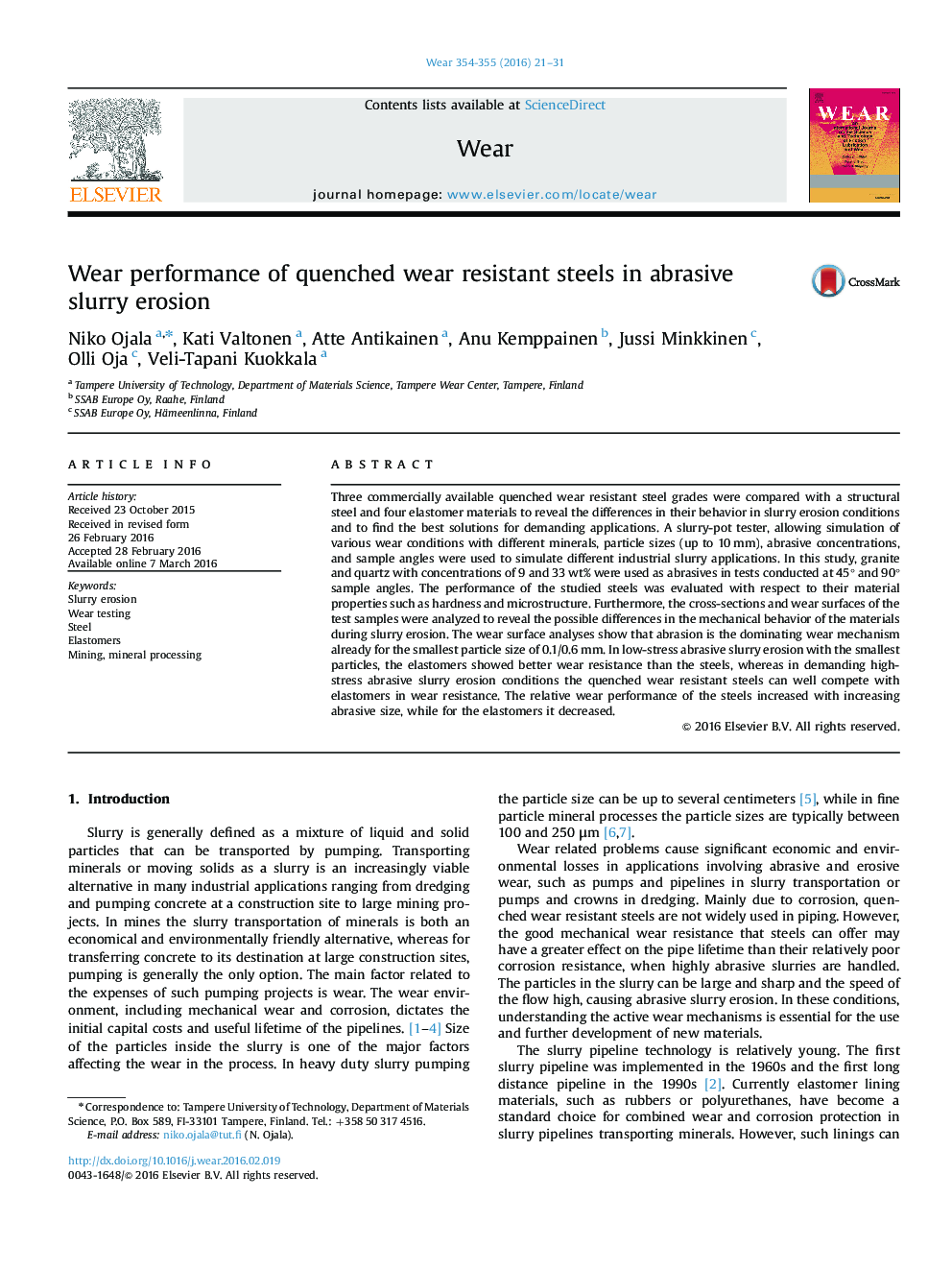| Article ID | Journal | Published Year | Pages | File Type |
|---|---|---|---|---|
| 616949 | Wear | 2016 | 11 Pages |
•Abrasive slurry erosion behavior of commercial steels was compared with elastomers.•High speed slurry-pot tester was used to simulate various industrial applications.•Wear mechanism in steels was classified as abrasion dominated erosion wear.•Transition from low-stress to high-stress abrasive erosion when particle size >1 mm.•In high-stress abrasive erosion conditions, steels outperformed polymers.
Three commercially available quenched wear resistant steel grades were compared with a structural steel and four elastomer materials to reveal the differences in their behavior in slurry erosion conditions and to find the best solutions for demanding applications. A slurry-pot tester, allowing simulation of various wear conditions with different minerals, particle sizes (up to 10 mm), abrasive concentrations, and sample angles were used to simulate different industrial slurry applications. In this study, granite and quartz with concentrations of 9 and 33 wt% were used as abrasives in tests conducted at 45° and 90° sample angles. The performance of the studied steels was evaluated with respect to their material properties such as hardness and microstructure. Furthermore, the cross-sections and wear surfaces of the test samples were analyzed to reveal the possible differences in the mechanical behavior of the materials during slurry erosion. The wear surface analyses show that abrasion is the dominating wear mechanism already for the smallest particle size of 0.1/0.6 mm. In low-stress abrasive slurry erosion with the smallest particles, the elastomers showed better wear resistance than the steels, whereas in demanding high-stress abrasive slurry erosion conditions the quenched wear resistant steels can well compete with elastomers in wear resistance. The relative wear performance of the steels increased with increasing abrasive size, while for the elastomers it decreased.
Graphical abstractFigure optionsDownload full-size imageDownload high-quality image (244 K)Download as PowerPoint slide
